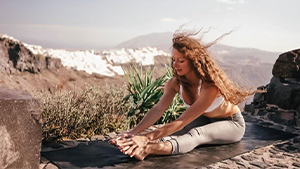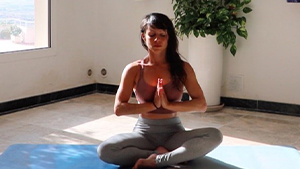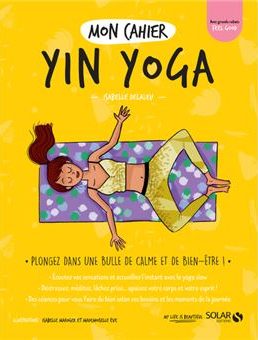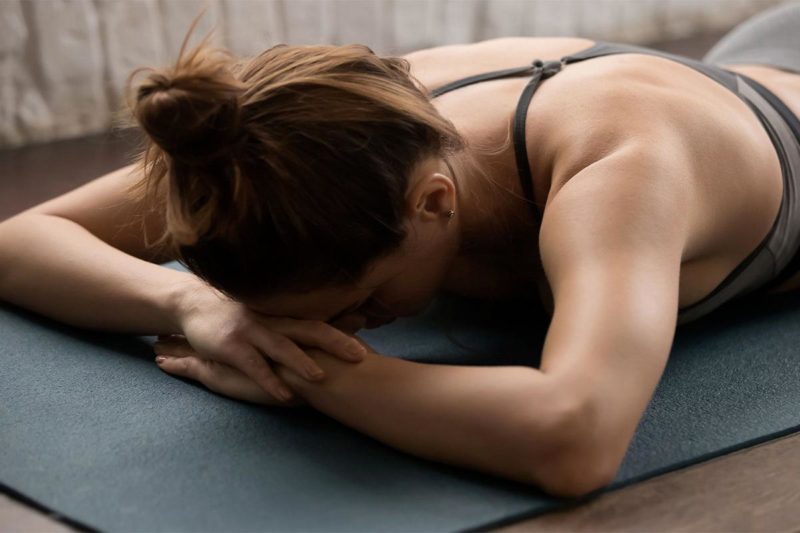This new kind of yoga is fast becoming the one that you absolutely have to try. Here we tell you all there is to know about yin yoga, the new discipline of zen aficionados.
Yin yoga is very much like meditation: static, and not slow, but gentle. It can be adapted to suit you, your body, your restrictions and limits. Talking about yin yoga is a bit like telling a fan of high-energy rock music all about the benefits for body and soul of a slow ballad. And actually, the discipline was invented (by American ashtanga yoga devotee Paul Grilley following an injury, in the 1990s. So what’s the idea? A finely-tuned combination of Indian yoga poses, sprinkled with traditional Chinese medicine principles and Taoist thought. As a result, yin yoga is an invitation to slow down, press the “pause” button and get reconnected with your body’s sensations – what you’re feeling, right now – to restore your inner tranquillity and get renewed energy! A whole program straight out of Clean Living!
How is it different to other kinds of yoga?
This kind of yoga is accessible to all, and is based on the principle of “holding” a pose. It’s not about powering through them in quick succession. At all. No, here you pick a pose and hold it. So is it easy? Not really. Because the aim of the game is to push back your own limits without it ever being painful. That way, you learn to accept discomfort (physical, mental and emotional alike) while staying completely still. It’s level 2 meditation in lotus pose. Of course, like other kinds of yoga, it’s supported by breath work in a big way. Participants are generally asked to practise it with their eyes closed, to really connect with their breathing and inner being. So how long do you hold each pose? At least three minutes, and ideally seven minutes (which is a long time) for each pose.
Good for body and soul
Yin yoga is an excellent activity for easing yourself back into exercise. This discipline combines still poses and voluntary muscle relaxation, which is the best thing you can do for your joints! The other advantage of yin yoga is that it strengthens lots of little deep tissues which are primordial for loosening up the body and restoring its flexibility. These are the fascia (the tissues that envelop muscles), ligaments (the connective tissue between cartilage and bone) and tendons (the tissues that attach muscle to bone). Some of the positions are very well known (child’s pose, Shavasana, lotus, etc.) and others a little less so, like tiger in the tree pose (sitting on your heels with your upper body resting on a bolster) or happy baby pose (laying on your back, with your knees drawn up to chest level, grasp your left foot with your left hand and likewise with your right).
Is it possible to practise it at home?

©Yoga Coaching 
©Sandra InSoha 
©Holis Life
By attending a class, you’ll be able to get acquainted with the various poses to copy (especially if you have never done yoga). But you can by all means do yin yoga at home. There are quite a few classes on YouTube (for example on the YogaCoaching, Sandra InSoha and Holis Life channels). Or just type “yin yoga” into your search bar. Certified yin yoga instructor and author Isabelle Delaleu gives lots of advice for practising independently in her book Mon cahier Yin Yoga (Éditions Solar). Use a timer. Prepare your session by writing out a running order sheet of the various poses. Also, don’t forget to have a blanket ready (so that you don’t get cold). So how do you hold out for several minutes at a time? If you’re a devotee of meditation, you’ll know how it’s done. If not, we suggest that you chant mantras, concentrate on your breath (inhaling and exhaling) or mentally escape to a beach in Zanzibar… So, are you ready?

To find out more: Mon cahier Yin Yoga (available in French only), Isabelle Delaleu, Éditions Solar, €7.90.







